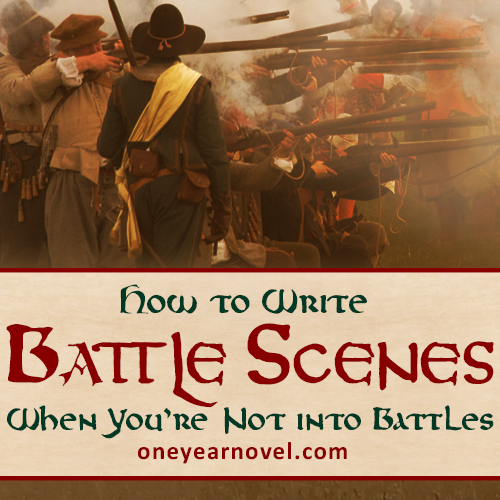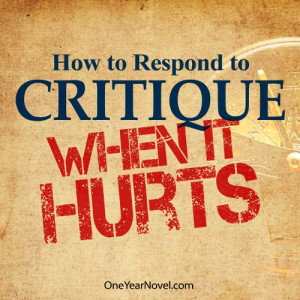How to Write Battle Scenes When You’re Not into Battles
 By Avrie Roberts, Guest Contributor
By Avrie Roberts, Guest Contributor
I know it’s coming. The Dreaded Scene. I’ve spent a good ten thousand words of my novel setting it up, trying to convey the atmosphere and emotion just right, attempting to find that perfect mixture of intrigue and dread. Sleepless nights and restless days pouring my soul into this story, and now it’s finally time to write the scene my (thus-far imaginary) readers are dying to read: the epic battle. Except now that I read over it, it’s slightly lacking in epicness and, well, basic elements of battle.
If you’re non-military minded, like me, the thought of writing battle scenes makes you inwardly groan. Maybe also like me, you hate every attempt you’ve made at writing those scenes. You can get away with not including warfare in some stories, but what happens when you can’t avoid it any longer? If ten-year-old boys know more than you do in the matter, how can you still make the fight scenes in your story plausible and interesting?
I do several things to make up for my lack of knowledge in this area, and they have nothing to do with extensive research. In other words, I cheat.
Steal from books.
I never used to consider myself an emotional person until I came across Rosemary Sutcliff’s writing. I would read a scene set in Roman Britain, the characters are on the run in hostile territory, chased by a war party, the odds stacking up against them by the minute, and… I’d cry. Actually I cry every time I read certain Sutcliff passages, because the language and imagery and poetry she uses to set up the scenes conveys so much more than facts the reader needs to know. She doesn’t necessarily give us the whole battle plan—she gives us her characters’ thoughts, fears, and small yet significant details. In those moments, our hearts begin to beat in time with the characters’.
That’s what I want to convey in my own writing; that feeling of complete understanding with my hero. I know you do too. Because I know that I can always rely on Sutcliff to inspire, I return to those scenes in hopes that by studying her work, I can accomplish a similar effect in mine. Do you have battle scenes by other authors you return to again and again because they move you? When you figure out what you love (or hate) about them, you can apply them to your story. Never underestimate the power of a favorite book and its influence in your own writing.
Write small.
Another way to approach battle scenes is to narrow the focus from the entire scope of the battlefield to a single beating heart. Expose the little details. Prove to your readers that they’re not reading a Wikipedia article, they’re walking beside your hero in the midst of chaos. Do they try to block out the screams? Can they smell the humanity? Taste the dust? Think of what your character sees and feels in that pinprick of time and give that to your readers.
Drawing from the surroundings can help in multiple ways. It can add credibility to your world, prolong tension, and direct the reader’s attention away from what might have been a lackluster description of the actual fight. The more familiar the setting is to you, the more realistic your readers will find the setting.
Enter the mind.
Another technique that ties into this well is bringing the battle to your character’s mind. You can make the fight scene work for you two-fold by using it to force your hero to come to terms with himself. Consider what’s at the forefront of your characters’ minds, and what details they would pick up on accordingly. If the inner struggle is more important to the story, details of the actual battle can fade to the background.
What demon has your hero yet to slay? What does she regret? If she’s certain she’s going to die that day, what does she wish she hadn’t left undone?
Actually do the research.
When all else fails, and you know the scene is still lacking, actually do the research. You’re not gathering information just so you can copy and paste, but so you can have a better understanding of where the scene should go. Obviously, research is required for historical fiction, but even fantasy worlds need a consistent culture. Sounding educated isn’t the goal, but knowing information that could fill in the gaps (even if you choose not to use it) will enhance the voice of your story. Most of what you research won’t make it into the story, but it will tint it.
Those are just a few ideas, and, really, there are more possibilities to bend the rules. I recommend these “tricks” especially if you have numerous fight scenes throughout your novel, and you don’t want your readers to go through the same sequence of actions for the fiftieth time. Your readers will be invested in the people of your story, not well-articulated battle strategies, so let them be your focus. If you do happen to have well-articulated battle strategies, you should congratulate yourself on being awesome and go share your wisdom with your fellow writers.
Now I think I shall take my own advice and revisit some stiff, vaguely battle-related scenes and try them from a fresh perspective.
…
Which fictional battle scenes do you find the most effective? Why?
…
About Avrie
Stories have always been a huge part of Avrie’s life. When she isn’t reading or writing them, she’s brainstorming them in her head or telling them through photography. She loves spending time with her family and traveling to see creation and history with her own eyes. She’s currently completing her BA in English through TESU, and after college plans to continue to write and grow her photography business.




This is great! I’m writing a story with lots of great action that I struggle to put into words at times. I too found myself – in my thirties – with a pounding pulse as I followed Marcus and Esca through their closer scrapes. I have books 2 and 3 of the Eagle series on my shelf, maybe now would be a good time to pick them up…
Thanks for the practical advice. Too many posts these days just repeat what not to do, or spend several paragraphs defining a term they used in the title. Way to go!